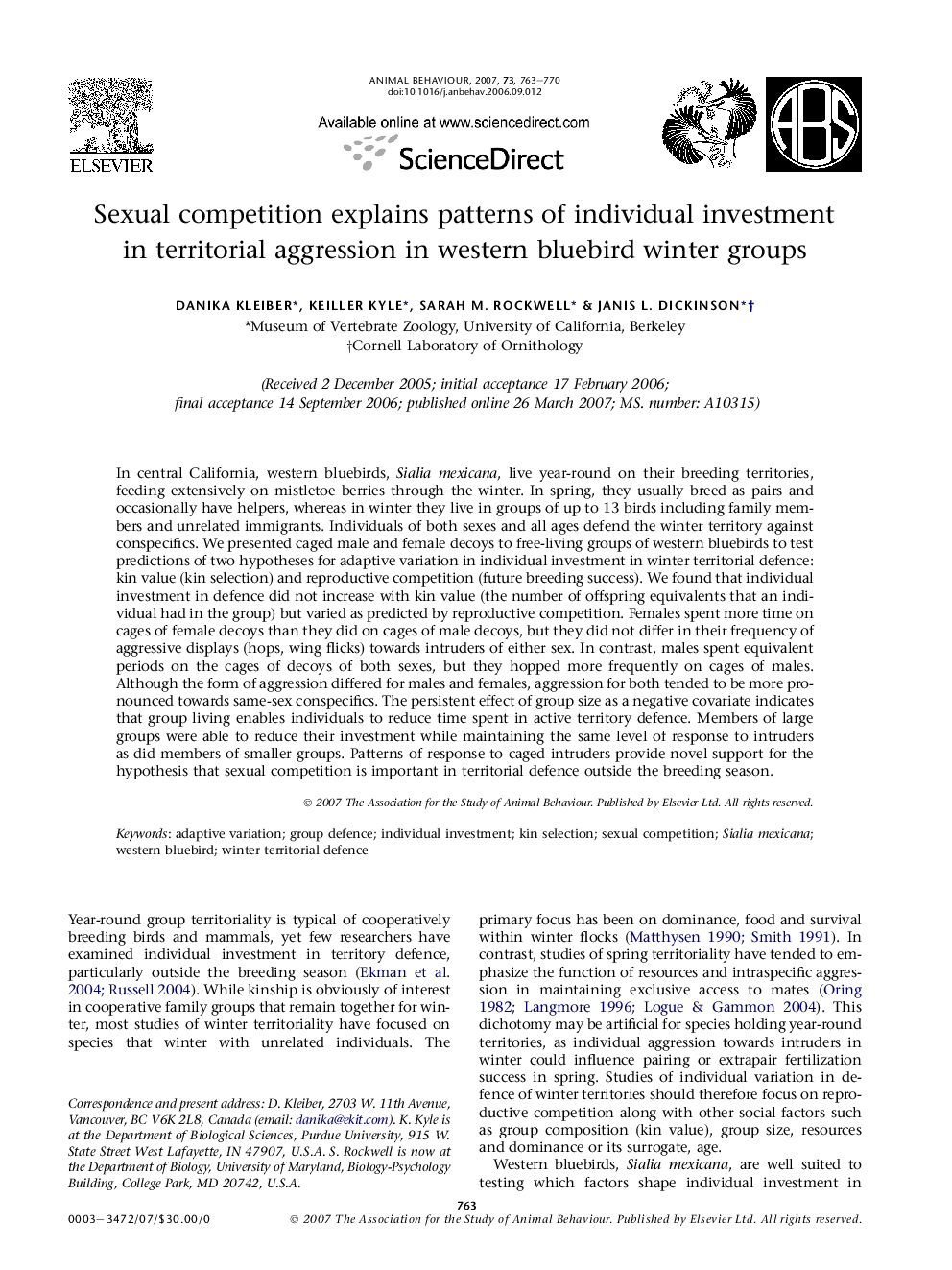| کد مقاله | کد نشریه | سال انتشار | مقاله انگلیسی | نسخه تمام متن |
|---|---|---|---|---|
| 2418987 | 1104362 | 2007 | 8 صفحه PDF | دانلود رایگان |

In central California, western bluebirds, Sialia mexicana, live year-round on their breeding territories, feeding extensively on mistletoe berries through the winter. In spring, they usually breed as pairs and occasionally have helpers, whereas in winter they live in groups of up to 13 birds including family members and unrelated immigrants. Individuals of both sexes and all ages defend the winter territory against conspecifics. We presented caged male and female decoys to free-living groups of western bluebirds to test predictions of two hypotheses for adaptive variation in individual investment in winter territorial defence: kin value (kin selection) and reproductive competition (future breeding success). We found that individual investment in defence did not increase with kin value (the number of offspring equivalents that an individual had in the group) but varied as predicted by reproductive competition. Females spent more time on cages of female decoys than they did on cages of male decoys, but they did not differ in their frequency of aggressive displays (hops, wing flicks) towards intruders of either sex. In contrast, males spent equivalent periods on the cages of decoys of both sexes, but they hopped more frequently on cages of males. Although the form of aggression differed for males and females, aggression for both tended to be more pronounced towards same-sex conspecifics. The persistent effect of group size as a negative covariate indicates that group living enables individuals to reduce time spent in active territory defence. Members of large groups were able to reduce their investment while maintaining the same level of response to intruders as did members of smaller groups. Patterns of response to caged intruders provide novel support for the hypothesis that sexual competition is important in territorial defence outside the breeding season.
Journal: Animal Behaviour - Volume 73, Issue 5, May 2007, Pages 763–770